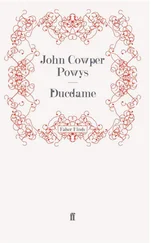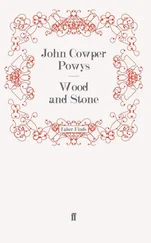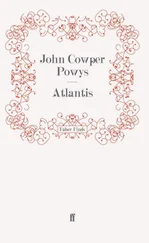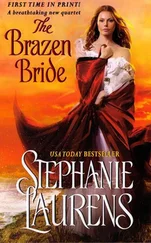In spite of the rapid healing of the serious hurt he had received from the arrow, shot at him by Baron Maldung, he felt convinced that it would be a case of taking the side of the Devil against God if he gave any aid, shelter, refreshment, hospitality, information, comfort, encouragement or welcome to Bonaventura and his brown-jerkin’d band.
It was quite another thing with Lady Ulanda, Baron Boncor’s wife. Lady Ulanda had recently abandoned herself to a savage campaign against Friar Bacon and all his works. Ulanda was anything but a religious lady. Her whole nature was practical. She was in the fullest sense a woman of action. She was suspicious of all thought, of all art, of all mental analysis. She wasn’t a vicious woman, but she was what is called a possessive woman, to a degree that was a danger to everybody round her and especially to the object of this possessiveness.
The object of it in this case was no child in her domestic world and no lover in the world outside. It was simply and solely her husband. And it was because of several very curious reasons, some physical, some mental, and some the result of occurrences in the early days of her marriage, that this dominant element in her nature had never from the beginning asserted itself in any perceptible degree in regard to her son. Her attitude to young Sir William was more like that of an affectionate aunt than a mother. She doted on him as a fanciful old maid might dote on a favourite pet; and it was a real blow to her when destiny brought it about that she was compelled to witness, day by day, the rapidly growing love-affair between her husband’s friend and cousin, Raymond de Laon, and the daughter of Lady Val of the Fortress.
Ulanda’s almost frantic hostility to Friar Bacon was intimately connected with Baron Boncor’s affection for his relative Raymond. It had been pain and poison to her from the start — the interest Baron Boncor took in Raymond. She had hated his coming to be an inmate of their castle from the very first, but Boncor was so set upon it that, without a greater quarrel than she dared to embark on, she had to accept it.
At the bottom of it was her simple recognition that her husband’s regard for Raymond de Laon was not unconnected with the young man’s exceptional good looks and the magnetic charm of his whole personality. She knew only too well that she herself, though full of an intense vitality and always able to carry off with dignity the proud assumptions of high-born authority, was grotesquely lacking in that sort of tender and appealing physical beauty which wins favour wherever it goes.
Like many another high-spirited and passionate lady, Ulanda of Cone felt such an intense longing to be as beautiful in reality as she was beautiful in her inner ideal of herself, that she had actually visited Friar Bacon in that upper chamber in the Priory where he was virtually a prisoner, and made a direct personal face-to-face appeal to him to help her, by means of those mysterious arts in which she understood he was such a master, to acquire, without any drastic change in her appearance, that particular magnetic charm by which the most formidable of men can be seduced and captivated by a woman.
As any of the serious disciples and pupils of the scientific Friar could have warned her, this shameless and unblushing assumption that he was some kind of a sex-wizard annoyed Roger Bacon so much that he refused point-blank to have anything to do with her; and Lady Ulanda came down the stone staircase from the Friar’s chamber resolved to have the most deadly revenge she could bring about on a man who refused so rudely — and he a sort of half-condemned heretic too — a natural and perfectly lawful request from a lady of her importance in that western district of the kingdom.
Lady Ulanda was not particularly fussy or punctilious in what might be called the heraldic or antiquarian aspects of the Barony of Cone. In fact she was a good deal less primed in such matters than were most of her contemporary ladies of title. She herself came of an old yeoman family called Dunderog entirely independent of any baronial manor, but claiming direct descent from Ralph Rorsuk, the predatory nephew of King Stephen.
When not fishing or hunting or fighting or riding between his arable-fields and his pasture-fields, or surveying his forestry, Baron Boncor was in the habit of spending his time in a spacious chamber at the top of a small round tower above the south-west ramparts of the Castle. This chamber ever since his grandfather once, on a pilgrimage to Rome, purchased some illuminated scrolls, and obtained in the same city the aid of a famous book-binder to cover them with specially prepared skins, had come to be known as the Library.
Boncor’s grandfather had fastened with golden-headed nails upon an enormous oak table opposite the hearth in this room a great number of large pictorial maps of the world, adapted to the comprehension of unclassical and unscholarly persons by the appearance at certain crucial points, on both land and sea, of various land-monsters and sea-monsters, and also of various voyagers, these latter enlarged in size so as to indicate by their dresses, arms, and banners, whether they came from Christian or Heathen countries, while the ships that carried them were reduced in size in comparison with the men — and women too sometimes — whom they carried, as if to compel recognition that a Power and a Mystery, that is at once half-human and half-divine, is ruling and will always rule the Air, the Earth, the Water and the Fire.
On each side of a blazing fire of pine logs, kept in constant flame by sticks from a big pile in a capacious copper container, were two deep well-cushioned chairs, that resembled the rudder divided sterns of a couple of barges rather than baronial judgment-seats or collegiate library-benches or cathedral choir-stalls.
It was between these two seats that the huge low eight-legged table of dark oak stood that was covered with these pictures of the world. One corner of this enormously large and very low table, on the surface of which Behemoths and Leviathans and dragons and sea-serpents were disporting themselves, was devoted to the art of book-binding, an art in which the present Baron of Cone took a lively and a practical interest.
On this corner of the table adjoining the Baron’s chair was a careful selection of the skins of small local wild animals, by the aid of which the Baron was wont to practise with slow and sedulous care the by no means easy art of making bindings for both sacred and profane manuscripts.
The delicate results of his devoted concentration on this unusual task could be seen meticulously arranged on various wooden stands beneath all the four walls of the chamber, including the one where a low and very narrow door opened on the stairway that led to the foot of the tower. It was not until an evening in the middle of February in that eventful Christian year of 1272 that the stored-up, banked-up, piled-up fury of Lady Ulanda against Friar Bacon burst out in full enough force, as she sat in the other curiously carved and richly cushioned chair over their fire of pine logs to make that easy-going Lord of the Manor of Cone realize that the situation was serious.
“If you don’t do something and do it quickly,” hissed Ulanda, sitting straight up at the edge of her seat, and with her long, bare arms giving the rim of the great table, which extended its breadth and its length at their side, a series of desperate blows with her knuckles, “I shall go mad!”
Across the maps fastened with golden nails to the table and making it look like the mingling of an illustrated bestiary with an illustrated cosmography, it seemed to Baron Boncor that under these violent blows all those weird sea-monsters and land-monsters quivered into a new life and ceased to be merely pictures. But the Baron’s look of bewildered concern only agitated her still more; and with a frantic artfulness she manipulated her knuckles so that her enormous signet-rings — rings that she only wore when she felt especially angry with the world, and which always made her husband think of certain pre-historic rings that had been found by one of his ploughmen near an ancient burial mound in the immediate vicinity of his castle — beat upon the table.
Читать дальше











